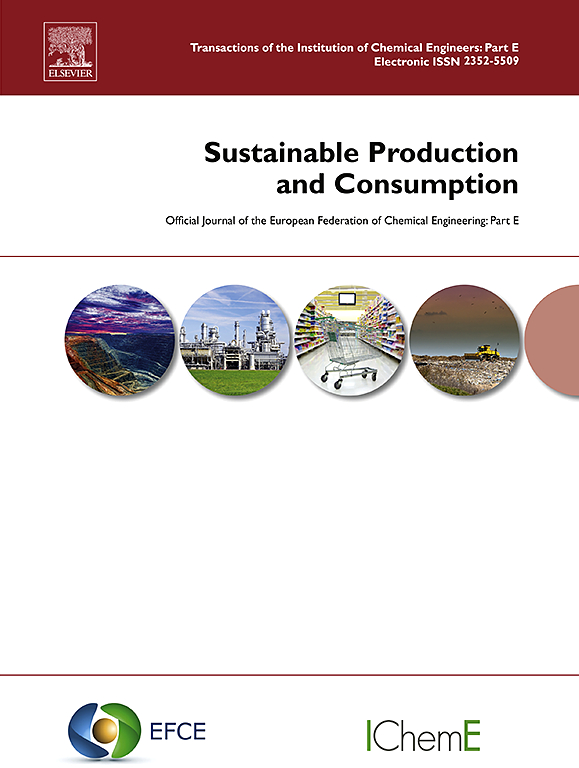Implementing life cycle thinking and climate change indicators in small and medium size enterprises
IF 10.9
1区 环境科学与生态学
Q1 ENVIRONMENTAL STUDIES
引用次数: 0
Abstract
The policy for a low emission society requires that companies measure their impact from a life cycle perspective for both products and corporate reporting. This work presents new climate performance indicators to evaluate business models (BM) based on life cycle assessment (LCA) and benchmarked with statistics for Sustainable Development Goal indicator 9.4.1. The research was conducted by action case studies involving 20 small and medium sized enterprises (SMEs) from various sectors. The SMEs did not have previous experience with LCA. Therefore, a work process called “LCA á la carte” was designed to gradually increase details and effort. The results of simplified indicators on the manufacturing SMEs showed that the direct emissions to value added are lower than industry average. However, when upstream emissions and value added were included, the emission intensities are about industry average. The full life cycle climate indicators are presented for a boat production company that experiment with new BMs. Use phase electrification was found to be the most effective measure (60 % lower emission intensity), while material recycling and boat rental each reduced the emission intensity with about 30 %. However, a combination of these new BMs gives best results and could be needed to reach future benchmarks. This study suggests LCA for BM as a combination of a work process, actors' perspectives, and performance indicators. The results highlight that the scope of activities included in the performance indicators is crucial. New reporting standards such as the European Sustainable Development Standard (ESRS) should review the emission intensity indicators to ensure consistency between the scopes of activities included.
在中小型企业中实施生命周期思维和气候变化指标
低排放社会政策要求企业从产品和企业报告的生命周期角度衡量其影响。这项工作提出了新的气候绩效指标,用于评估基于生命周期评估(LCA)的商业模式(BM),并以可持续发展目标指标 9.4.1 的统计数据为基准。研究通过行动案例研究进行,涉及 20 家不同行业的中小型企业 (SME)。这些中小型企业以前并没有生命周期评估的经验。因此,设计了一个名为 "LCA á la carte "的工作流程,以逐步增加细节和工作量。制造业中小型企业的简化指标结果表明,直接排放量与增加值之比低于行业平均水平。然而,如果将上游排放和附加值计算在内,排放强度则与行业平均水平相当。对一家尝试使用新型生物量管理的船只生产公司,提出了全生命周期气候指标。使用阶段电气化被认为是最有效的措施(排放强度降低了 60%),而材料回收和船只租赁各降低了约 30% 的排放强度。然而,将这些新的基本措施结合在一起可获得最佳效果,并可达到未来的基准。本研究建议将工作流程、参与者的观点和绩效指标结合起来,对 BM 进行生命周期评估。研究结果突出表明,绩效指标所包含的活动范围至关重要。新的报告标准(如欧洲可持续发展标准 (ESRS))应审查排放强度指标,以确保所含活动范围的一致性。
本文章由计算机程序翻译,如有差异,请以英文原文为准。
求助全文
约1分钟内获得全文
求助全文
来源期刊

Sustainable Production and Consumption
Environmental Science-Environmental Engineering
CiteScore
17.40
自引率
7.40%
发文量
389
审稿时长
13 days
期刊介绍:
Sustainable production and consumption refers to the production and utilization of goods and services in a way that benefits society, is economically viable, and has minimal environmental impact throughout its entire lifespan. Our journal is dedicated to publishing top-notch interdisciplinary research and practical studies in this emerging field. We take a distinctive approach by examining the interplay between technology, consumption patterns, and policy to identify sustainable solutions for both production and consumption systems.
 求助内容:
求助内容: 应助结果提醒方式:
应助结果提醒方式:


